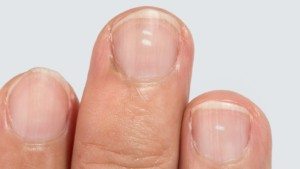It sounds exotic. Moroccan argan oil. Sounds pretty snazzy, right?
Well, it does come from Morocco, and the process by which we obtain it is pretty labor-intensive. Don’t let that scare you off, though. Argan has been used for centuries to maintain the health and vibrancy of skin, hair, and for nails. You don’t have to visit the salon on a regular basis in order to have beautiful nails. The combination of a well-balanced diet, a thoughtful beauty regimen, and good personal hygiene can give you salon-worthy nails at a fraction of the cost and chemical burden. When looking to take care of your nails, see here this blog post about picking the best semi cured gel nail strips. When rubbing lotion or oil into your hands, make sure you work it into the cuticles and nails, too. Regular handwashing or use of hand sanitizer can dry out the skin and nail bed quickly, so try to moisturize after every wash, if possible.
The fruit of the argan tree contains a nut. The nut is opened by hand so that workers can get at the small kernels inside. There are only two or three kernels in each nut, so you can imagine how many seeds it takes to create just a few ounces of oil. It winds up taking about 15-20 hours only to produce one liter of oil.
Though it’s an oil, it’s lightweight, non-greasy, and absorbs quickly into your skin, where it can set to work taking care of you! It’s so versatile that it can replace several products in your beauty and skincare routine. Here’s how!
Argan Oil For Your Hair
Use #1 – Hair Conditioner
An oil as versatile as argan deserves a place in your shower, especially if you have long hair. The beneficial nutrients, essential fatty acids, sterols, and vitamin E can nourish, moisturize, and protect your locks from damage, leaving it soft, shiny, and healthy.
Use it as you usually would a conditioner in the shower or use it as a leave-in conditioner, too. If your roots are naturally oily, apply only to the ends.
For an in-depth treatment, apply, working down to the roots, comb long hair through to distribute the oil evenly, and wrap hair in plastic wrap or a shower cap overnight to keep the heat in. Wash it out in the morning. This treatment used weekly is excellent for strengthening brittle hair.
Use #2 – Anti-Frizz
If you suffer from frizzy hair, you’ve probably tried all sorts of over the counter remedies. Argan can tame the frizz while conditioning your hair and lending healthy shine at the same time.
Put a few drops of oil in your palm, rub your hands together, and smooth it onto your hair. Use it after blow-drying to hair that’s easier to manage. For a boost, add a few drops of essential oils.
Argan Oil For Your Skin
Use #3 – Skin Moisturizer
Even though it’s an oil, argan is light and will absorb into the skin quickly without leaving an oily residue behind. That makes it a terrific moisturizer for your skin. Most of the oil’s fat content contains generous amounts of oleic and linoleic acids, which are important nutrients for maintaining healthy skin. It also contains a high amount of antioxidant vitamin E. This versatile oil improves the moisture content of the skin when used topically or taken orally. When used regularly, it can hydrate and soften the skin
To use, apply a drop or two to your face and neck after cleansing using gentle circular motions.
Use #4 – Acne Treatment
Some oils are known to make acne worse, clogging pores and inducing inflammation. Argan is not one. Intensely rich in antioxidants, it has anti-inflammatory properties and the ability to help soothe and heal the damaged skin cells. Most cases of breakouts, especially in adults, aren’t because of oily skin. They happen because the skin is dry, damaged, and inflamed. Once again, you can thank the linoleic acid for reducing inflammation. The hydration benefits contribute to promoting a healthy skin barrier, which is vital in helping to prevent breakouts. “One of the major fatty acids in argan oil – linoleic acid – can help reduce inflammation, soothe skin, and improve moisture,” explains Susie Wang, skincare chemist, and co-founder of 100 Percent Pure.
It does this while at the same time reducing the amount of sebum the skin produces in people with oily-tending skin. Increased sebum production is often at the center of many breakouts and can lead to clogged pores.
To use, apply directly to affected problematic areas. It can be beneficial for many causes of acne, though it probably won’t help in the case of hormonal acne. Adding tea tree oil can give the benefit of antibacterial, antifungal, and antiviral properties.
Use #5 – Reduce Stretch Marks
Stretch marks are what happens when the collagen and elastin in your skin are stretched to the max, tearing the fibers. Often the result of pregnancy, they can be frustrating to deal with and play havoc with your confidence.
You can help to reduce the occurrence of stretch marks by using argan throughout your pregnancy, during the periods of rapid growth. Both vitamins A and E and the sterols in argan work to reduce inflammation and hydrate the skin, improving the elasticity.
Warm a few drops of pure oil in your hands and gently rub the areas of concern in a circular motion. This region could include your stomach, hips, breasts, thighs, or any other problem areas. If you already see stretch marks, mix the oil with brown sugar and massage in before your next bath. After drying, apply the oil directly onto the skin.
Use #6 – Soothe Dry Skin
Dry skin can be a real downer. Itchy, bare, scaly spots that are red and uncomfortable are challenging to heal, especially when you’re dealing with conditions like eczema or psoriasis. This oil can deeply quench the inner skin’s layers and work to repair the damaged barrier while easing the irritation that usually accompanies these conditions. The fatty acids and vitamin E can support the skin’s recovery and provide essential nutrients that can prevent any further drying or irritation.
Work a small amount directly into the irritated skin after exfoliating.
Use #7 – Anti-Aging
There are numerous components of argan that have made it a popular anti-aging treatment that can help to prevent and even diminish fine lines and wrinkles. It can restore elasticity and leave skin feeling plumper and softer. The omega fatty acids help to strengthen the skin’s tissue, which can help with wrinkle prevention.
Taking the oil internally could help to slow the aging process by reducing inflammation and oxidative stress on the cells.
Massage a few drops onto your face and neck as a moisturizer before going to sleep at night. Even better? Mix a few drops with ceramides. “Argan oil’s fatty acids work even better on skin when they’re combined with ceramides,” says Joshua Ross, celebrity aesthetician with SkinLab, “which also helps protect the lipid barrier of the skin.”
Use #8 – Irritation From Shaving
Razor burn and shaving bumps can happen because your razor is too dull, or your skin wasn’t well-moisturized when you shaved, or maybe you’re just unfortunate enough to have really sensitive skin. Either way, the polyphenols and sterols in argan can help to soothe and heal your irritated skin.
It’s great to use anywhere you shave. Warm a few drops in your hands and lightly blend onto your freshly-shaved areas.
Use #9 – Moisturize Your Lips
Let’s face it. Your lips are skin, too, and they can get just as dry, cracked, and chapped as the rest of you. Sometimes they need a little TLC, as well, especially during the dry, cold, windy winter. Argan can help to relieve the dryness and keep them conditioned.
Apply the oil directly to your lips to keep them hydrated, soft, and supple. Wipe away any excess.
Use #10 – Moisturizing Exfoliant
You know the quenching benefits of this oil, and how it can ease irritation and redness. Work it into your exfoliation routine by creating a scrub for your lips and skin.
Mix a few drops with brown or white sugar until it forms a paste, then use to exfoliate chapped and dry skin or lips gently. Rub in a circular motion for a few minutes before rinsing with warm water. Pat dry.
Argan Oil For Your Nails
Use #11 – Repair Weak and Brittle Nails
When your nails are always cracking and brittle, you’re almost embarrassed to show them in public. They’ll certainly never hold a manicure. But if your hands are always submerged in water as is the case with health care workers, or exposed to cleaning products, detergents, and other chemicals, weak, brittle nails become the norm.
Argan can strengthen and repair brittle or weak nails, locking in much-needed moisture.
Soak your fingertips in a small bowl with 50/50 Argan and lemon juice for 10 to 15 minutes.
Use #12 – Cuticle Treatment
Who enjoys painful hangnails? No one? Oh. Right.
When your hands are dry, and your nails are dull and cracked, chances are your cuticles aren’t happy, either. They could do with the deep moisturizing treatment that argan can give them.
Dot a tiny drop onto each nail and rub it into the nail bed and cuticle. If you’re preparing for a mani/pedi, wash your hands thoroughly before applying polish.
 Final Thoughts on Adding Argan Oil to Your Beauty Regiment
Final Thoughts on Adding Argan Oil to Your Beauty Regiment
The rich antioxidants, essential nutrients, and anti-inflammatory properties of this oil contribute to its nickname, “Liquid Gold.” It’s generally considered to be safe for use by everyone, which makes it a great addition to your beauty counter.
It’s easy to incorporate into your routine, and its versatility gives you a great variety of benefits for healthy. long hair, skin, and nails.
Make sure you look for a high-quality oil that is 100% pure, organic, cold-pressed, unfiltered, and non-deodorized. It’s a bit on the expensive side, but the gold is worth it. A small bottle will go a long way.


















